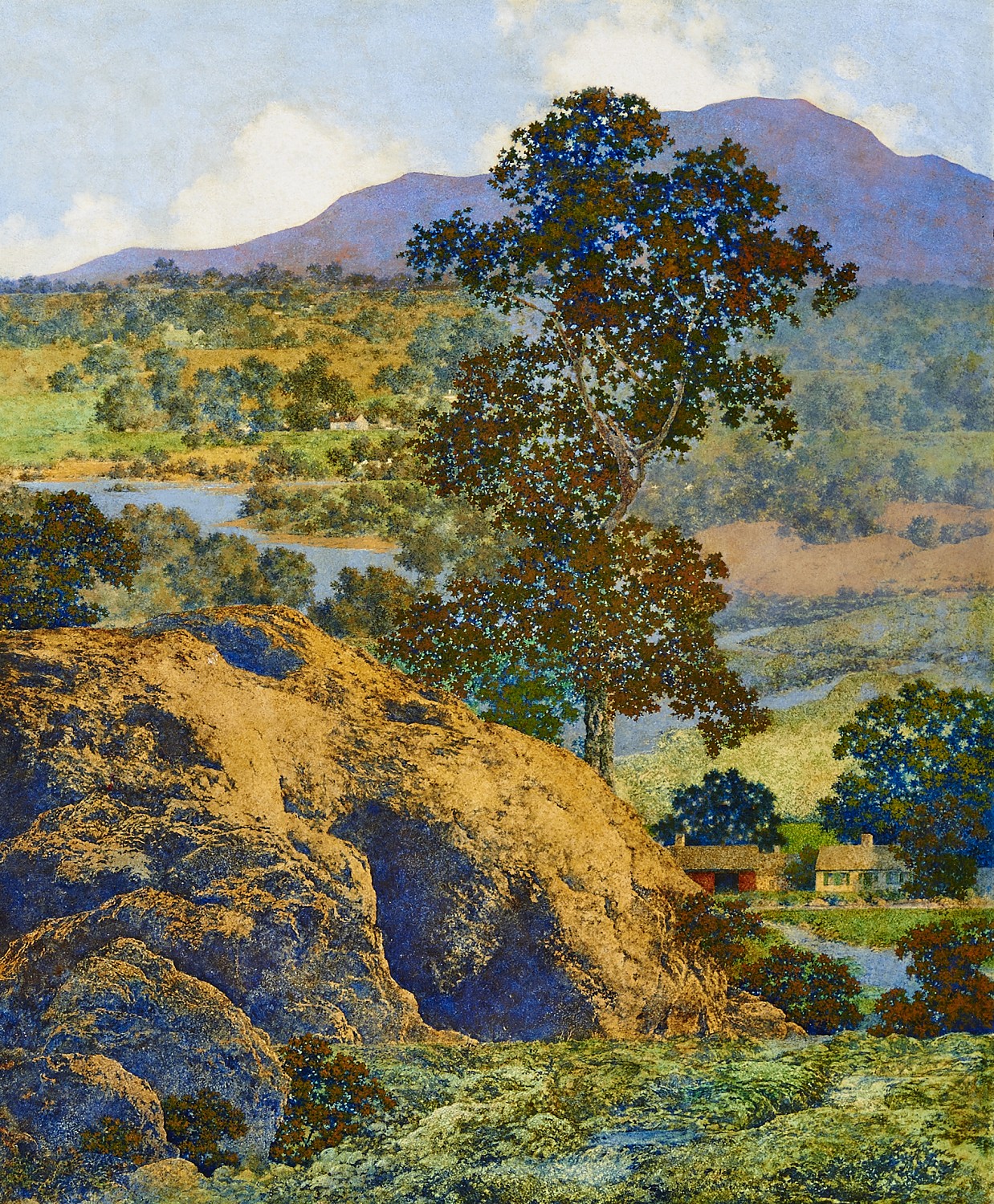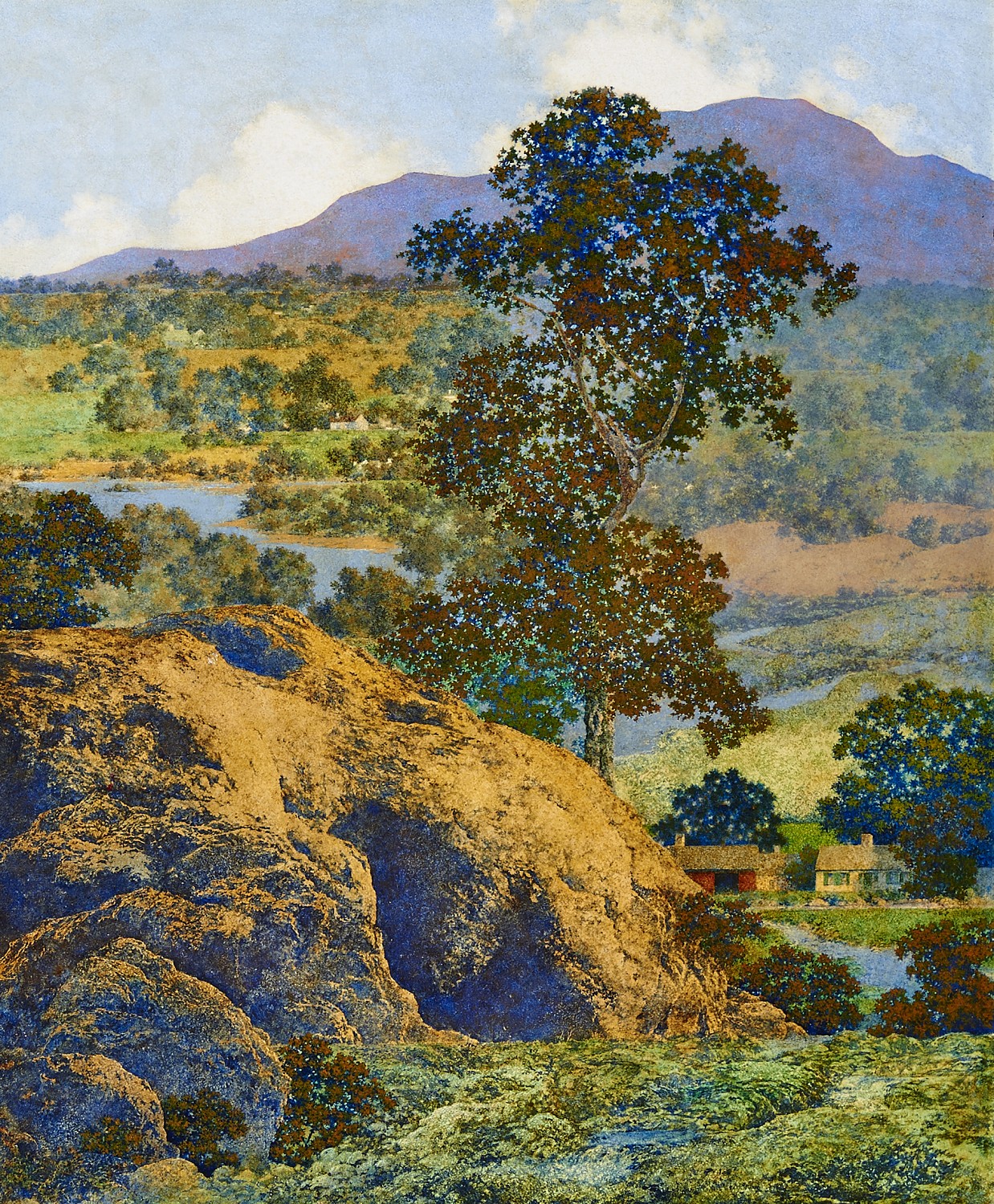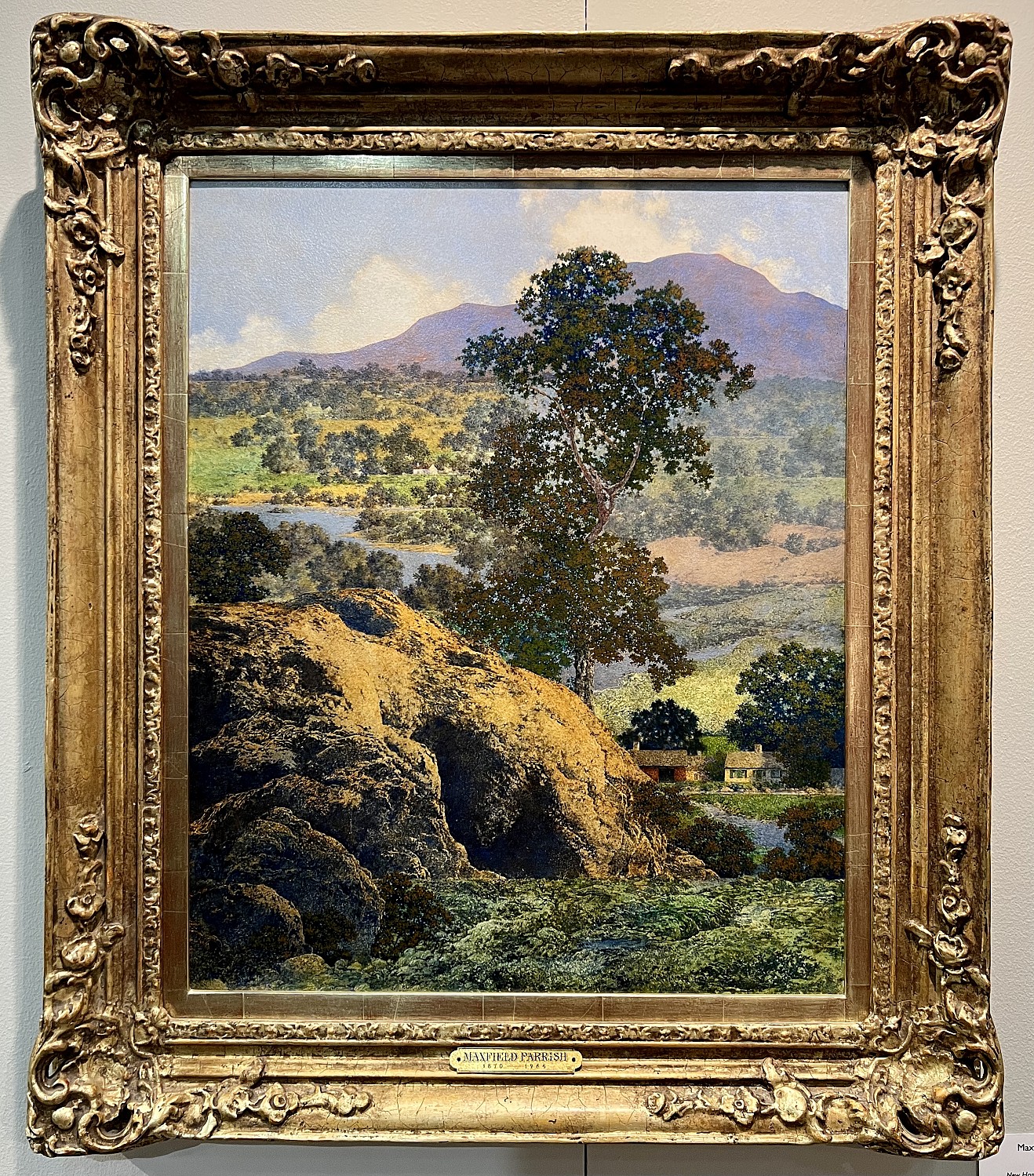"New Hampshire Hills" Lot no. 2713
By Maxfield Parrish (1870-1966)
1932 (Estimated)
23.00" x 18.63", Framed 33.00" x 28.63"
Oil on Board
inscribed MP Jr. No. |76.| / Painted by Maxfield Parrish / Maxfield Parrish
REQUEST PRICE
PURCHASE REQUEST
In the present painting, Maxfield Parrish captures the picturesque countryside of his New Hampshire home, where the artist and his wife, Lydia, moved from Philadelphia in 1898, and where he eventually built his home known as The Oaks. While this new environment provided the privacy and lack of distractions he needed to produce some of his most ambitious works, Parrish had been inspired by this bucolic landscape from the earliest days of his career. Writing of his parents’ home in Cornish, New Hampshire, Parrish said, “Such an ideal country, so paintable and beautiful, so far away from everything—and a place to dream one’s life away…I long to be up there and become identified with it” (Sylvia Yount, Maxfield Parrish: 1879-1966, New York, 1999, p. 23).
In 1931, at the height of his popularity in America, Maxfield Parrish issued a statement to the Associated Press announcing his decision to abandon the figurative work that had made him a household name. Now, he declared, he was devoting himself exclusively to landscape painting: “I’m done with girls on rocks. I have painted them for thirteen years and I could paint them and sell them for thirteen more…It’s the unattainable that appeals. Next best thing to seeing the ocean or the hills or the woods is enjoying a painting of them" (Maxfield Parrish: A Retrospective, San Francisco, California, 1995, p. 14).
As a result of this decision, the magical, detailed landscapes previously seen only as backgrounds for his figurative works now became the primary subject. Goddesses and nymphs were replaced by another ideal—the mountains, rolling meadows, grand oak trees, humble barns and open blue skies of the American landscape. The jewel-like color he sought to achieve is demonstrated in New Hampshire Hills, which displays a complementary palette of deep purple and tawny ochre highlighted with passages of lush green. The brilliant quality of the light—one of Parrish's primary aesthetic interests—suffuses the composition with a radiant glow, contributing to a tranquil, idyllic vision of his beloved New England home.
San Mateo, California, La Galeria, 1979 and 1982
Tokyo, Japan, Isetan Museum of Art; Kintetsu, Japan, The Museum of Art; Yamanashi, Japan; Yamanashi Prefectural Museum of Art; Stockbridge, Massachusetts, Norman Rockwell Museum, Maxfield Parrish: A Retrospective, April-December 1995, p. 136
Literature:
Coy Ludwig, Maxfield Parrish, New York, 1973, p. 219, no. 815
Maxfield Parrish Jr., ed., Illustrated Catalog of the Paintings and Sketches of Maxfield Parrish, 1973, no. 76, illustrated p. 13
Alma Gilbert, Maxfield Parrish: The Masterworks, Berkeley, California, 1992, p. 168, illustrated in color fig. SE.24, p. 243
Laurence S. Cutler and Judy Goffman Cutler, Maxfield Parrish: A Retrospective, San Francisco, California, 1995, p. 134
Laurence S. Cutler and Judy Goffman Cutler, Parrish & Poetry: A Gift of Words and Art, San Francisco, California, 1995, p. 69
Alma Gilbert, Maxfield Parrish: The Landscapes, Berkeley, California, 1998, p. 82, illustrated in color pl. 15, p. 83
Laurence S. Cutler, Judy Goffman Cutler and the National Museum of American Illustration, Maxfield Parrish and the American Imagists, Edison, New Jersey, 2004, p. 278, illustrated in color p. 279
JVJ Publishing, Jim Vadeboncoeur; The Vadeboncoeur Collection of Images, Palo Alto, CA. Issue#13, Fall 2014
Explore related art collections: Books / Landscape / Rural / $100,000 & Above / 1930s
See all original artwork by Maxfield Parrish
ABOUT THE ARTIST
To behold the work of American illustrator Maxfield Parrish (1870–1966) is to enter into a fantasy world of ethereal beauty. Whether a book illustration, magazine cover, painting or mural commission, his flawlessly rendered subjects and fairy-tale settings are infused with a sense of mythical beauty unmatched by any artist in his wake
A Unique Approach
The magic and sublime spirit of Parrish’s work is the result of his unique approach to painting. He began with a white base which served to illuminate the image from the first layer up through to the last. Repeated layering of varnish on the surface of the pigment heightened the vibrancy of his colors, yielding shades like the famous "Parrish blue," a rich cobalt that is now indelibly associated with the artist. This singular technique allowed Parrish to convey textures and patterns with the intense detail and saturation of color that became trademarks of his best works.
This May, a museum-quality collection of 11 works by Maxfield Parrish pay tribute to the superior talent and unique vision of this seminal artist. A leading highlight of the collection is Sing a Song of Six Pence, measuring over 13 feet long and painted as a mural for the hotel bar of the Sherman House in Chicago, Illinois. Parrish began his career painting a mural of Old King Cole for the University of Pennsylvania in 1894, and was immediately recognized for his ability to render exquisite detail on a monumental scale. He often projected photographic images and then painted directly on the surface of his murals, which may account for the veracity of the features displayed in this work.





